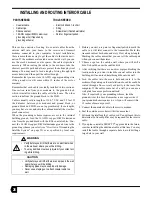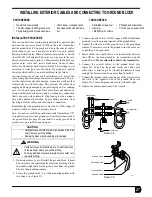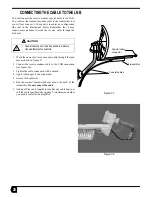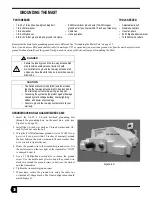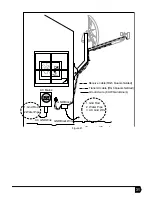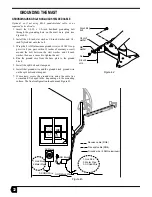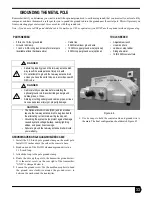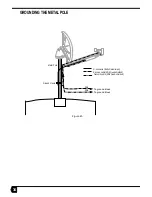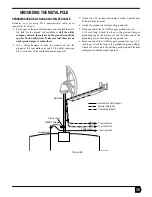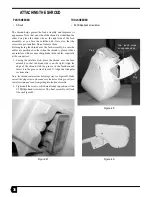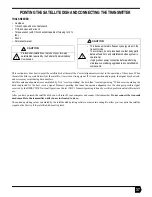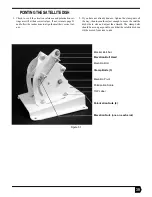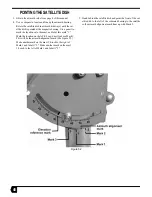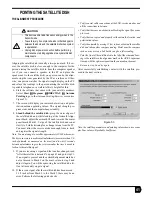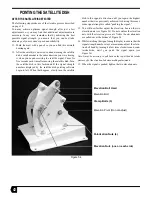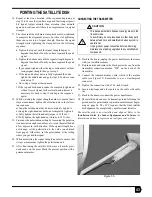
33
GROUNDING THE METAL POLE
Remember that if you determine you want to install the optional ground rod to earth main ground, that you must call your local utility
companies and have them mark a safe spot for you to pound the ground rod into the ground near the metal pole. This will prevent you
from contacting pipes or electrical wires or cables with the ground rod.
Note: if you do not use RG6 quad shielded cable (CommScope 5781 or equivalent) you MUST use the optional method of grounding.
GROUNDING USING RG-6 QUAD-SHIELDED CABLE
1. Install the 2-3/8-inch pole ground clamp on the metal pole.
Install it 13 inches above the soil or the concrete base.
2. Bend one end of the 8 AWG aluminum ground wire in a
1-1/2-inch loop.
3. Attach the loop to the pole ground clamp.
4. Route the wire up the pole to the transmitter ground screw.
It is the metal screw on the rear right of the transmitter;
“GND” is stamped below it.
5. Loosen the ground screw. Use the needle nose pliers to bend
the ground wire clockwise around the ground screw, in
between the washer and the transmitter.
6. Use tie wraps to hold the coaxial cable and ground wire to
the mast. The final configuration should match Figure 45.
PARTS NEEDED
TOOLS NEEDED
• 5/8-inch x 10-foot ground rod
• Ground rod clamp
• 1/-inch x 2-3/8-inch ground clamp for metal pole
(available at local hardware store)
• Cable ties
• 8 AWG aluminum ground wire
• 14 AWG copper ground wire (optional)
• 6 AWG copper ground wire (optional)
• Adjustable wrench
• Lineman pliers
• Ladder or step ladder
• Sledge hammer
• 14/8/6 AWG wire cutters
DANGER
• Failure to properly ground the two-way antenna dish
may result in severe personal injury or death.
• Do not attempt to ground the two-way antenna dish
unless you have the skills to do so in accordance with
NEC code.
DANGER
• Call local utility companies before installing the
optional ground rod to avoid striking underground
cables, pipes, or lines.
• Striking or cutting underground cables, pipes, or lines
can cause personal injury or property damage.
CAUTION
• The National Electric Code (NEC) and local codes
require the two-way antenna dish to be grounded to
the alternating current main earth ground point.
• Grounding the system helps protect against damage
caused by static voltage buildup, nearby lightning
strikes, and power line crossings.
• Failure to ground the two-way antenna dish will void
your warranty.
Figure 44
Ground screw








